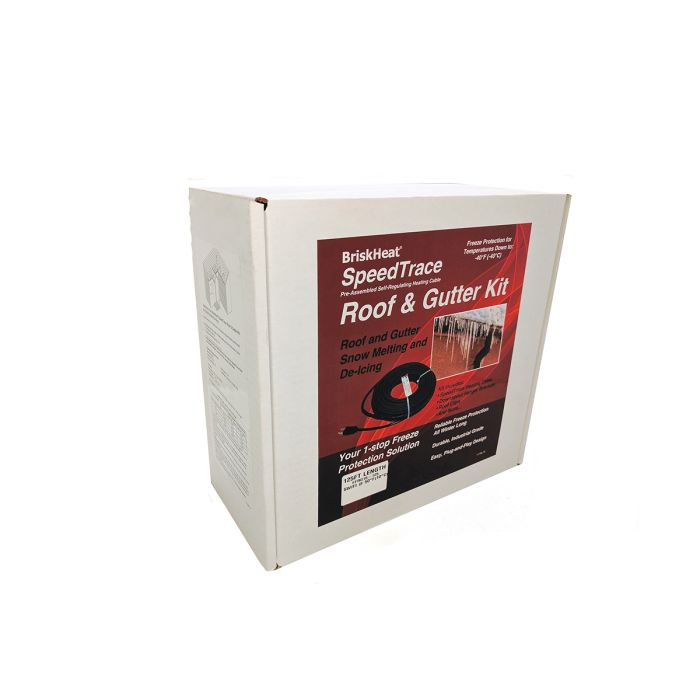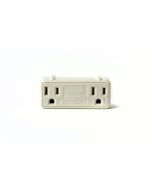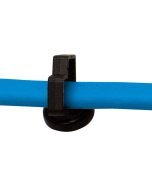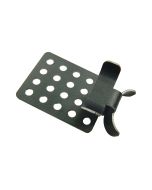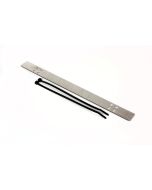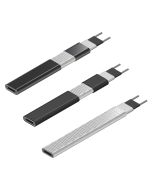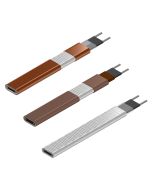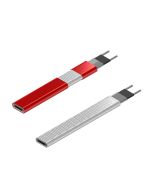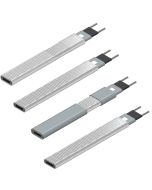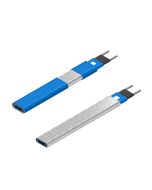Winter can be a challenging season for property and business owners, especially when it comes to protecting their buildings from the cold, snow, and ice. From frozen pipes, gutters, and roofs, the winter months can cause significant damage to your property. Check out these 4 reasons why prepping your space in the warmer months is ideal.
SpeedTrace Roof and Gutter Kits
Description
BriskHeat SpeedTrace Roof & Gutter De-Icing Kits are designed to prevent the formation of ice dams on rooftops by using an electric self-regulating roof heat cable system. The roof heating cables melt away excessive ice and snow from the roof, gutters, and downspouts to ensure proper draining. Stop Roof and Gutter ice today, with BriskHeat! Select your configuration below of our SpeedTrace cable kit; available in various cable lengths and voltages.
- Available in 110-120 VAC and 208-277 VAC
- Complete with heating cable, roof clips, downspout hangers and cable ties needed to install your de-icing system
- Provides easy installation with its pre-assembled 3-prong plug, grounded for safety
- Not suitable for flat, slate, stone, ceramic, composite tar/gravel roofs
Part Number
Additional Features:
- Durable, long lasting professional-grade self-regulating heating cable
- Suitable for residential, commercial, adn industrial roofing applications
- Ideal for melting snow and de-icing roofs, gutters, adn downspouts
SpeedTrace can be used for a variety of heat solutions, some of which are referenced by a number of different terms; including:
- Roof De-Icing Cable
- Ice Dam Cables
- Heat Tape for Roofs
- Heat Tape for Gutters
- Roof Heat Cable
- Heat Cable for Roof
- Roof Cables
- Heat Wire for Roof
Supply Voltage: 110-120 VAC, 208-277 VAC
Nominal Wattage:
- 5 watts/ft (16 watts/m) at 50°F (10°C)
- 10 watts/ft (33 watts/m) at 32°F (0°C) in ice and snow
Minimum Exposure Temperature: -40°F (-40°C)
Maximum Exposure Temperature: 150°F (65°C)
Outer Jacket: Moisture and flame resistant Thermoplastic outer jacket
Bus Wires:16 AWG
Power Cord:
110-120 VAC: 6 ft (1.8 m) power cord with 3-prong grounded plug (NEMA 5-15P)
208-277 VAC: 2.5 ft (0.76 m) power cord with bare wire leads
Installation Requirements
Suitable for:
- Standard pitched roofs with or without gutters
- Standard roofing materials including shingle, shake, rubber, tar, wood, metal and plastic roofs
- Gutters and downspouts made from standard materials including metal or plastic
Not suitable for:
- Flat, slate, stone, ceramic, composite tar/gravel roofs
Electrical requirements:
- GFCI protected circuit, local code approved outlet (power source) within close proximity to the heating cable starting point, and protected form the weather

| Part No. 110-120 VAC | Part No. 208-277 VAC | Cable Length ft(m) | Roof Clips | Downspout Hangers | Cable Ties | Caution Labels |
| FFRG15-50 | FFRG25-50 | 50 (15.2) | 30 | 2 | 15 | 2 |
| FFRG15-75 | FFRG25-75 | 75 (22.8) | 50 | 4 | 20 | 2 |
| FFRG15-100 | FFRG25-100 | 100 (30.5) | 60 | 4 | 25 | 2 |
| FFRG15-125 | FFRG25-125 | 125 (38.1) | 80 | 4 | 30 | 2 |
| FFRG15-150 | FFRG25-150 | 150 (45.7) | 100 | 6 | 40 | 2 |
Roof Measurement
| Roof Overhang [Eave/Soffit] in (mm) | Standard Roof [M] ft (m) | Standing Seam Roof 18 in (457 mm) Seam [M] ft (m) | Standing Seam Roof 24 in (610 mm) Seam [M] ft (m) |
| None | 2.0 (0.61) | 2.5 (0.76) | 2.0 (0.61) |
| 12 (305) | 2.5 (0.85) | 2.8 (0.85) | 2.4 (0.73) |
| 24 (610) | 3.0 (0.91) | 3.6 (1.10) | 2.9 (0.88) |
| 36 (914) | 4.0 (1.21) | 4.3 (1.31) | 3.6 (1.10) |
How Self-Regulating Cable Works
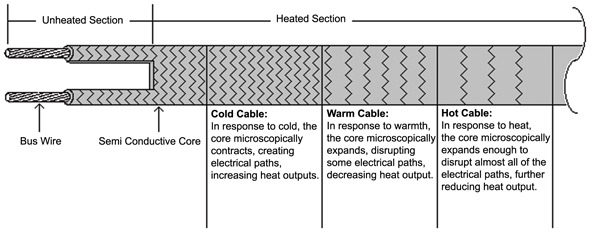
- The semi-conductive core material contains a graphite network, which allows electricity to flow from one bus wire to the other. When the core is dense and colder, there are many paths for electricity to take through the graphite network, producing more heat.
- Since the core material expands as it heats, the graphite network is elongated, disrupting some of the paths. More and more paths are disrupted as heating continues until the system reaches self-controlled thermal stability. When the core material cools, it contracts, reconnecting some of the electrical paths in the graphite network, and more equivalent heat is produced.
- This temperature response occurs independently at each point along the heater. If an externally produced high temperature occurs next to a low temperature in the cable, each section of heating cable will adjust its own heat output in relation to its own local requirements.
What is an Ice Dam?
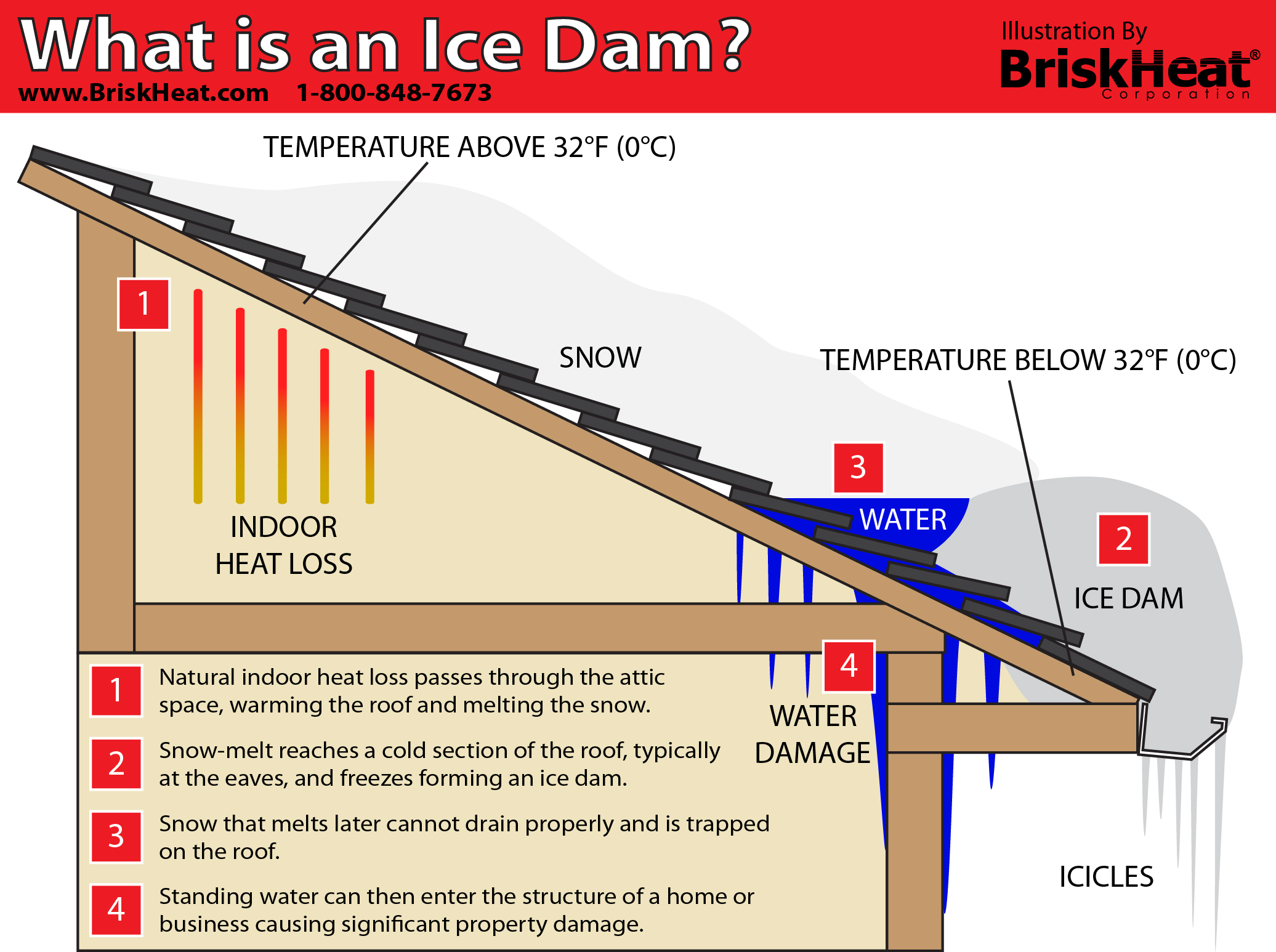 Ice Dams are Ice buildups that form on a rooftop due to the inherent temperature differences between heated spaces and roof overhangs.
Ice Dams are Ice buildups that form on a rooftop due to the inherent temperature differences between heated spaces and roof overhangs.
[1] Naturally, some heat loss occurs through an attic. As even a small amount of heat passes through the attic space it warms the roof.
[2] Snow on the roof melts and runs under the insulating blanket of snow, until it reaches a cold section of the roof and freezes, beginning the formation of an ice dam.
[3] More snow melts and cannot drain properly. Snow melt water then gets trapped, creating standing water on the rooftop.
[4] Standing water then can enter a home or business by penetrating through roofing materials causing significant property damage
Don't see your size or option?
Have a question about which BriskHeat product is right for you?
Need Application assistance? Contact Us. We are here to help!
- Monday - Friday
8:00am - 5:00pm EST
- Worldwide
1-888-412-0122

